Tupperware days
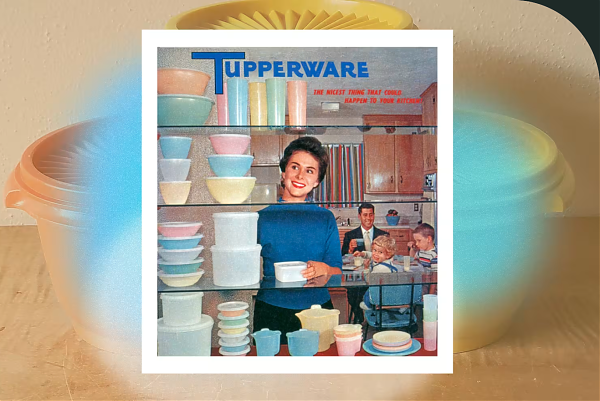
In 1970s Cambridge, grain salads and hummus abounded. I carried my lunch in a gray plastic Thermos lunchpail big enough to corral my daily array of tiny orange Tupperwares. Even today, a sandwich is my lunch of last resort.
So strong is my identification with Tupperware that I even made it into a verb: To Tupp, i.e. “Let me Tupp the leftovers.” (And yes, I do know this is slang for something else in Britain.)
While a few of those one-serving Tupperware cups are still floating around my family’s cupboards, I may not be able to Tupp much longer: Tupperware Brands filed for bankruptcy protection in September, “succumbing to mounting losses due to poor demand for its once popular colorful food storage containers,” according to Reuters.
Catherine Bauer Wurster: A Thoroughly Modern Woman
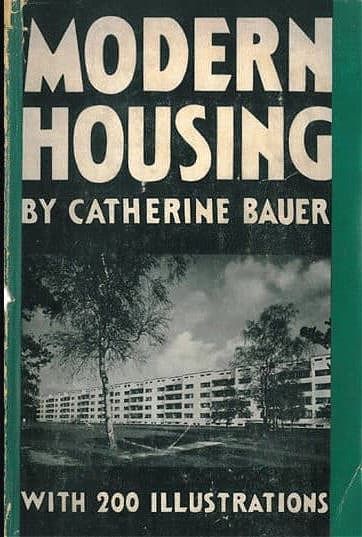
The latest episode of New Angle: Voice features the first lady of American housing policy.
Catherine Bauer’s life divided into two names and two geographies: her urban east coast youth and her Bay Area soft landing. She hobnobbed with the bohemian elite of the interwar years, charming the pants off of the big architecture names of the Weimar Republic, Paris cafe society, and the International Style: Gropius, Mies, Corb, Oud, May — with her lover, Lewis Mumford — culminating in the publication of her 1934 classic: Modern Housing.
Her glamour and charismatic presence endeared her to trade unionists, labor leaders, and politicians, including five presidents — who she tried to turn to her vision of housing as a worthy responsibility of the government — sexier and leftier during the Depression. Her arguments were a harder sell in the red scare fifties and ran into a “dreary deadlock” in the suburban sixties. In the Bay Area she developed an academic career that also included architect husband William Wurster, a daughter, and a house on the bay — all surrounded by the nature she quickly grew to love. Her legacy lives on to this day, as even the latest of housing legislation echoes the progressive ideals she was advocating for in her prime.
Forever towels
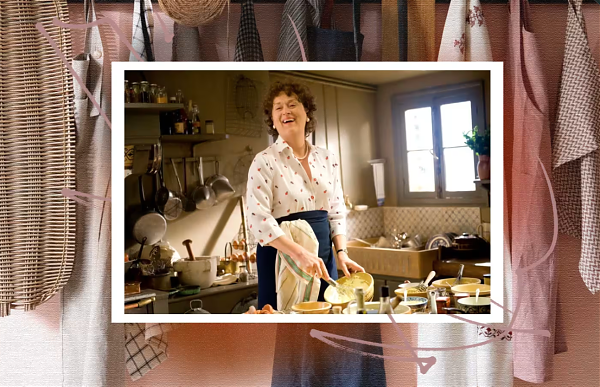
The chic durability of 100% linen.
My late grandmother’s house comes with forever things. A dark-stained oval dining table, a Cosanti bell, nesting phoebes, and a drawer full of tea towels. On some, the original design is faded into oblivion, leaving faint organic lines across the woven fabric. Others proudly display the calendar for 1995 under the bright silhouette of a chicken, the alphabet in flowers (H is for Hyacinth, I is for Iris), a William Morris print.
In the drawer they seem depleted. Hung on the hook by the sink, or draped over the oven door handle to dry, they are limp. These are not the dish towels of kitchen renovation dreams, casually draped over a farmhouse sink, or the kitchen towels of influencer Instagram, folded in fat packages into an under-sink caddy.
And yet, as I wiped dinner dishes or spread out blueberries to dry, they proved there was still life in these natural fibers. Every towel worked better than the new ones I had at home, purchased on the recommendation of one of the perpetual recommendation engines. The contemporary towels were thick, were looped, were two-sided, and were made of natural fibers. But as I approached them with dripping hands, their smooth surfaces seemed to shy away from the work. Those Williams-Sonoma waffle towels? The Wirecutter pick? They refused to absorb.
An Artist Reimagines the Spaces of Childhood, With Thorny Results
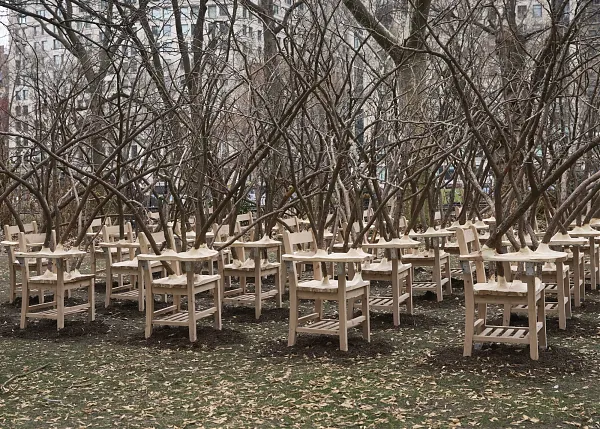
Hugh Hayden’s “Brier Patch” (2022). Yasunori Matsui / Madison Square Park Conservancy.
The first time Hugh Hayden tried to build a playground, his client said no. The sculptor’s pitch to the nonprofit Public Art Fund included a full-size play structure made of wood and covered in thorns. The curators got the point of the piece, titled “America.” The problem was that the prickly playground would have to be fenced off.
The piece Hayden ultimately made had an equally thorny backstory, but a smoother shell. “Gulf Stream” is a beautifully crafted oak rowboat that, upon approach, reveals itself to have the frame of an enormous ribcage — as if Jonah’s boat and Jonah’s whale had merged into one uncanny object. Hayden drew on references from art history, namely Winslow Homer’s painting of a Black man alone in a boat in shark-infested waters and Kerry James Marshall’s depiction of a more idyllic version of the same. Kids got it right away.
“We had no idea how popular it would be as a playground,” Hayden says. “Literally within 30 seconds that we installed it, children ran up and parents started taking their photos with children climbing on it.”
Lesson learned: Put a climbable structure in a park and it’s gonna get climbed.
Skate Parks Are Growing Up
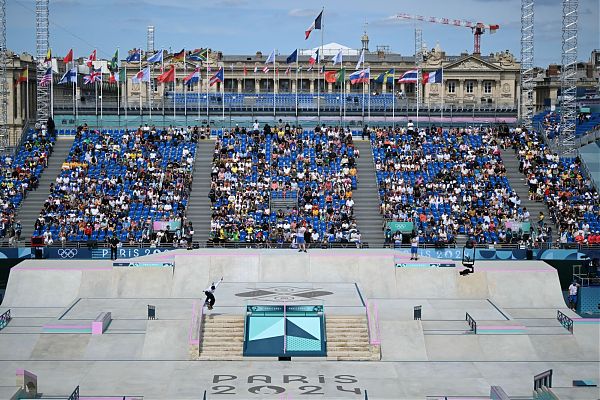
Skateboarding at Paris 2024. Photo by Kirill Kudryavtsev/AFP/Getty Images.
A punk pastime made massively popular by the Olympics has reached amenity status with ‘skate gardens.’
Skateboarding has rarely been welcomed anywhere. But the boards’ urethane wheels, adopted from roller skates, meant it could be practiced everywhere—on stairs, rails, benches, ramps, culverts and, in the drought-plagued summers of the mid-1970s, empty swimming pools.
Skate parks can be found in the corners of cities: beneath viaducts and overpasses, besides vent stacks and port terminals and in parks on the edge of town. These spaces may evoke skating’s guerilla origins, but they fail to represent skating today: an Olympic phenomenon, a $3.2 billion business and a sport that spans Generations X to Alpha.
While skateboarding has been embraced by the establishment that skaters once had to outrun—elite skaters are competing for gold at the Place de la Concorde in the Paris Olympics—the sport’s everyday facilities typically remain on the fringes of the urban landscape.
Future-Proofing a Home Where Water Is a Focus and a Thread
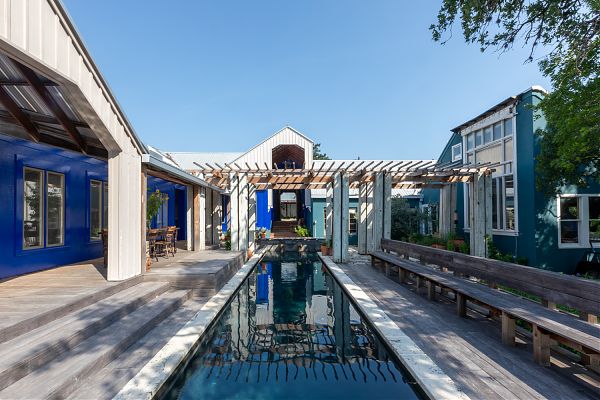
The Moore/Andersson Compound in Austin, Texas (1984–87). Photo courtesy Kevin Keim.
To safeguard Charles Moore and Arthur Andersson’s Austin compound against extreme weather, a caretaker looks to the best of its design.
During the February 2021 Texas deep freeze known as Snovid, the Moore/Andersson Compound in Austin was fine—if having a decimated garden and needing to blast the pipes with a hairdryer in the middle of the night can be considered fine. “I went and rescued several friends whose power went out, who were freezing in their homes,” says Kevin Keim, the hands-on director of the Charles Moore Foundation, a nonprofit that owns and takes care of several buildings by Moore, the architect, who died in 1993.
Two winters later, the compound, which Moore designed in 1987 with business partner Arthur Andersson, and which is widely considered to be a postmodern masterpiece, wasn’t so lucky. “During one of the freezes, the pool pump froze and burst, and all the basin water drained into the Gulf of Mexico,” Keim recalls.
Gazing at the empty rectangle, he saw an opportunity.
Beyond Architecture: The Fantasy Worlds of Phyllis Birkby
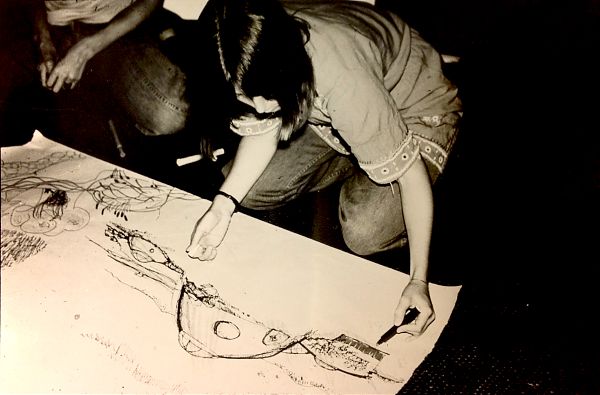
Noel Phyllis Birkby Papers, Sophia Smith Collection, Smith College
Pushed to the side and rarely credited for her architectural work at Davis Brody, Phyllis Birkby became a significant figure in extending the lesbian women’s movement to architecture during the 1970s. Her Environmental Fantasy Workshops played a crucial role in galvanizing the community, providing a creative and empowering space within a male-dominated profession.
Growing out of other consciousness raising techniques, freed up in her classes, Phyllis released the rigor of her conventional training to get down on the floor, and lead the group in sketching their fantasies — however outlandish — on giant rolls of butcher paper.
Birkby’s work not only contributed to architectural discourse but also fostered a sense of collective identity among lesbian architects, highlighting the intersectionality of gender, sexuality, and professional identity in the field. In her later years, she focused on architecture for people marginalized in other ways – by addiction, by age, and by disability, again imagining spaces of community and support.
Immersive Museum Exhibits for Kids Know How to Compete With Screens
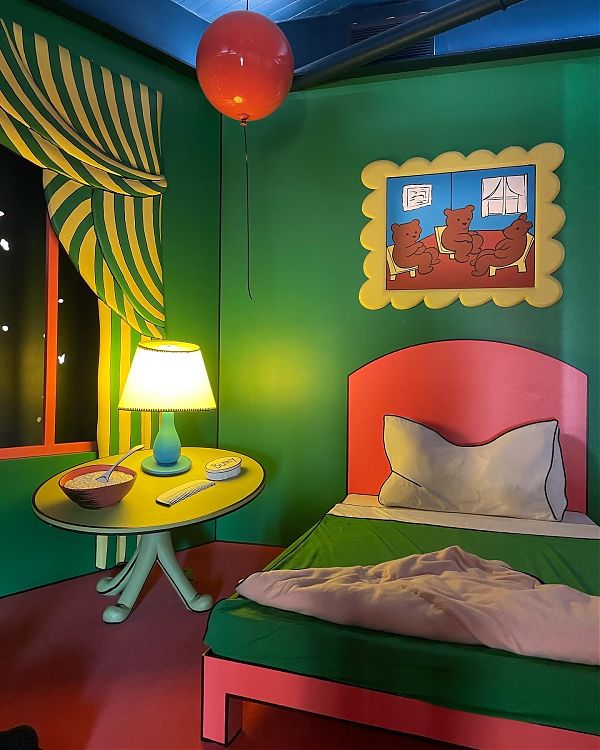
The scene at The Rabbit hOle in Kansas City, Missouri.
In the great green room (just off the bookshop) there was a telephone (oversized) and a red balloon (hung from the ceiling) and a picture of a cow jumping over the moon (above the fireplace). Lift the telephone’s handset — a novelty unto itself for the under-10-year-olds — and the son of Goodnight Moon illustrator Clement Hurd reads that book’s alluring, rhythmic first pages, calling out each element in the room (phone, balloon, cow).
Transfixing, for the child not otherwise distracted by three-dimensional versions of other objects pictured in the book, like the toyhouse (big enough to crawl inside), the mittens on the drying rack (detachable) or the glowing electric flames (cosy).
This scene would be enough to capture the attention of most children. But as visitors to “The Rabbit hOle,” a new 45,000-square-foot (and growing) immersive experience in Kansas City, Missouri, will soon find, there is always another twist to this story. Tug on the fake fire and it moves as one piece, bringing the andirons, logs and fireback with it. Through an arched opening, one can see white floors and painters’ tape.
“In the next phase, this will lead to the Tons of Fun room,” says Emily Hane, development and grants manager for this sprawling North Kansas City museum devoted to children’s books.
In the world down the rabbit hole, first dreamed up by artists, co-founders and former booksellers Pete Cowdin and Deb Pettid in 2015, Goodnight Moon leads to John Steptoe’s urban stroll Uptown, which leads to Tomie de Paola’s Italian village tale Strega Nona, and on and on, winding through building environments from one beloved story book after another. As they make their way through the museum’s levels, carved from a former warehouse by architects Multistudio, kids groove in Harlem or read a book under a chapeau-bedecked tree, bake a pie with Sal’s mother or check to see whether Klassen’s bear really did eat that rabbit.
“Not everyone knows what they want or need until they see it,” says Cowdin. “We build this and it is like, plop, in the middle of this phone-driven world it is a total place of relief for people.”
Goddess of Small Things
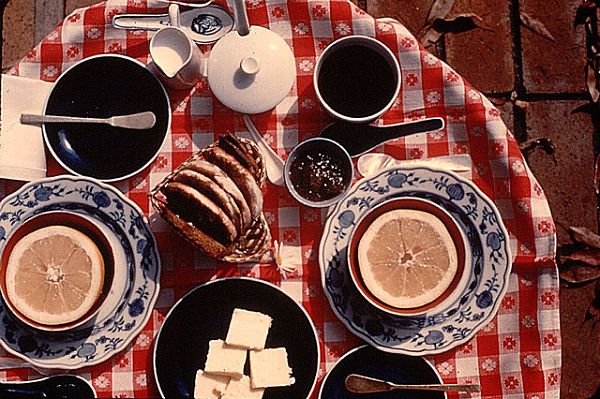
Image from the Eames Collection at the Library of Congress © Eames Office
Originally in print in Ideas Spring 2024.
For Ray Eames, hosting meant transforming the everyday into a performance.
Architecture critic Esther McCoy wrote, in a posthumous tribute to Ray Eames, that the Eames House “was a framework for the display of rich objects.… a showcase for what Robert Venturi called ‘the good Victorian clutter.’” Ray seemed to accumulate clutter like breathing. Her small chamber at the Eames Office held wrapped gifts too pretty to open. The drawers and walls and shelves at the Eames House held collections of combs, kites, Japanese lanterns, Mexican pinatas, many of which would later turn up as decoration for Herman Miller showrooms, or illustrate the House of Cards.

On Twitter
Follow @LangeAlexandraOn Instagram
Featured articles
CityLab
New York Times
New Angle: Voice
Getting Curious with Jonathan Van Ness